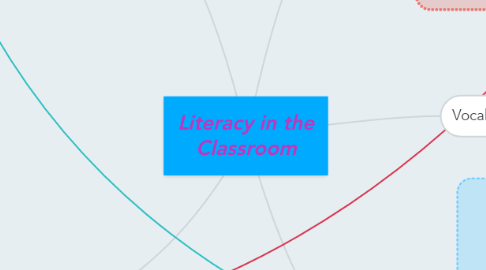
1. Journals
1.1. Giving Students purpose while they read
1.2. Dialectic Journals
1.2.1. 7th Grade: Chinese influence on Japanese Medieval Culture
1.2.1.1. Two column journal
1.2.1.1.1. Students demonstrated a better understanding of material
1.2.1.1.2. Left side: Chinese influences on Japan Right side: reactions, connections to other content or their own lives
1.2.1.1.3. Adjustment: Necessary to clearly state expectations for students on the reaction side of the dialectic journal
1.3. Students can make connections to existing SCHEMA
1.3.1. Schemata Theory
1.3.1.1. Schemata are active and always being evaluated
2. Technology
2.1. Web Based Literacy
2.1.1. weebly.com/epicgreekgods
2.2. Google Classroom, Edmodo to share information, articles, handouts
2.2.1. Saves time, paper
2.3. 1:1 Classrooms
2.3.1. Mind Map Tools
2.3.1.1. mindomo, mind meister, popplet
2.3.2. Google Docs
2.3.2.1. Can be an effective tool to check for understanding
2.3.2.1.1. Google Forms
2.3.3. Necessary to model proper usage of technology and set clear expectations for students to follow
2.4. Developing 21st Century skills
2.4.1. Preparing students for the real world
3. Vocabulary
3.1. Students work in groups to create skits to represent a vocabulary word
3.1.1. Students engaged in coversation about the vocabulary
3.1.2. Also had a lot of fun making these skits, leading to better remembrance of word
3.1.2.1. Chance for socialization and sutdent interaction
3.1.3. One adjustment: Have students preforming skit tell the class what the word is before performing, allowing students to take guesses as to what that word means based on the skit
3.1.4. Grouping Strategies
3.1.4.1. Cooperative learning groups
3.2. Provides foundations and basis of student literacy
3.2.1. Fronloading
3.2.1.1. roots and morphemes
3.3. Graphic Organizers
3.3.1. Serves as a scaffold
3.3.2. Frayer Model Chart
3.3.2.1. Necessary to model for students
4. Close Reading
4.1. Marbury vs. Madison Decision
4.1.1. Took longer than expected
4.1.1.1. Adjustment: Start as a whole class, then gradually put students into small groups where they will follow the same model set by the teacher when they read as a whole class
4.1.2. Gained a deeper understanding of the court case
4.1.3. Students were more focused and engaged
4.2. Very Specific and focused text related questions and directions
4.2.1. Help with student engagement
4.2.2. Evidence based questions relating to the text
4.2.3. Common Core related
4.2.3.1. Reading, writing, use of evidence to defend answers and claims
4.2.4. Questions of various difficulties
4.2.4.1. Bloom's Taxonomy
